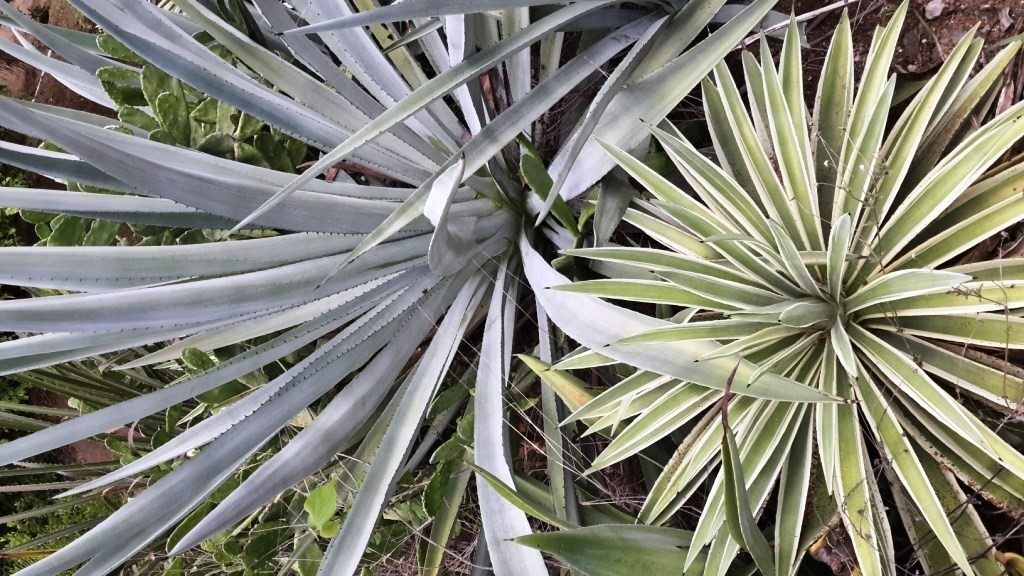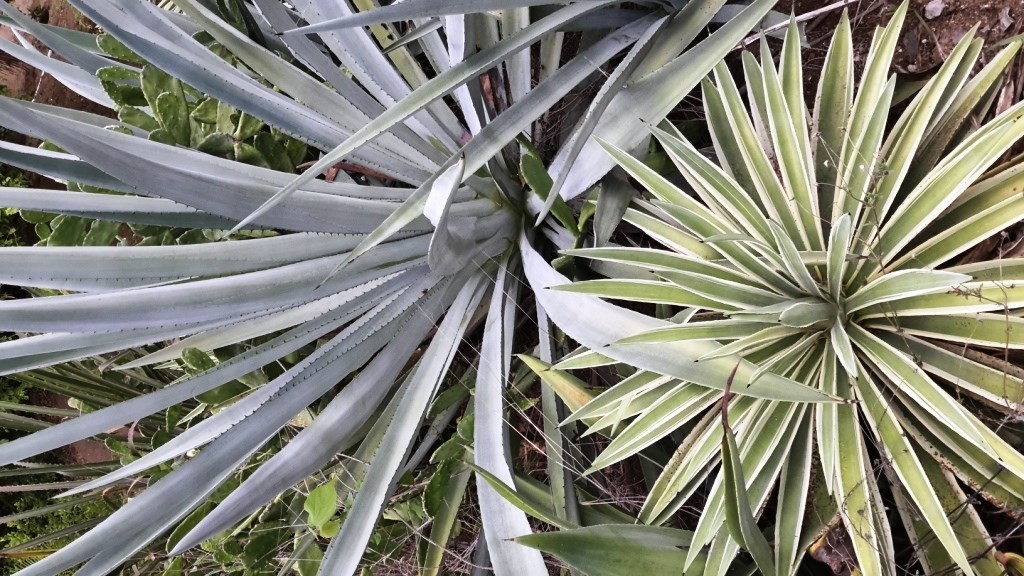By Tommy Clarkson from the October 2018 Edition
Blue Agave, Agave tequilana Family: Agavoideae
Also known as: Tequila Agave
The Greek word for these interesting succulents is agauos, meaning “of kings and heroes, illustrious, hence noble” and, good full-time residents of Mexico that we are, we’ll drink to that! (Have you ever had one of My Patty’s Mango Margaritas?
If so, you’ll understand and concur!)
The up to three hundred varieties of Agave are native to the whole of Mexico, Central America and the Southwestern US desert. But, as Mexico’s most iconic plant, it is most often thought of as being from the land of the Aztecs, Mayans and Toltecs. (Interestingly, all of the species in this genus are more closely related to lilies than to cacti!) But now, a bit of history.
Arriving in “New Spain” in 1529, Franciscan friar Bernardino de Sahagún described these succulents as looking like giant artichokes and cited how the local farmers planted rows of them to anchor terraced farming fields. He was especially interested in the Agaves’ medicinal properties.
In the 1843-published “The History of the Conquest of Mexico”, by William H. Prescott, he referred to the Agave with great admiration. He cited how “the miracle of nature was the great Mexican (Agave), or maguey, whose clustering pyramids of flowers, (towered) above their dark coronals of leaves (funnelshaped).
Its bruised leaves afforded a paste from which paper was manufactured. Its juice was fermented into an intoxicating beverage, pulque; its leaves further supplied an impenetrable thatch for the more humble dwellings; thread, of which coarse stuffs were made, and strong cords, were drawn from its tough and twisted fibers; pins and needles were made from the thorns at the extremity of its leaves; and the root, when properly cooked, was converted into a palatable and nutritious food. The agave, in short, was meat, drink, clothing and writing materials. Surely, never did nature enclose in so compact a form so many of the elements of human comfort and civilization!” Now, there was a man who admired Agave!

The twentieth-century Mexican historian, Fernando Benítez, described the Agaves in this way, “Like a horse of the plant-world, it is capable of retaining a great quantity of water and making it through the worst of droughts. So as to not let go of a single drop, it armors itself like medieval warriors, with an impermeable shield, and numerous thorns, to keep its enemies at bay.”
…Blue Agave
Rather obviously, today’s best-known Blue Agave product is tequila most of which is made in the State of Jalisco. Generally speaking, one can get two to five liters of tequila from each plant. By law, the Blue Agave plant is the only agave that can be used in the production of tequila. Conversely, mezcal which is mainly produced in Oaxaca can be made from up to thirty different agave species. However, both of these modern drinks are produced through a European distillation process. Of a more basic nature, the early Mesoamericans simply fermented the agave sap to produce pulque. This is a liquor with an alcoholic content similar to beer a tradition still maintained today. But, in that the fermentation never stops, one can’t bottle pulque.
So, if one has the space how might one grow their own Blue Agave? They’re undemanding plants, and can well handle welldraining soil, rocky or sandy soil, without fertilization but require at least six hours of sun per day. Mature plants are very drought tolerant, but when first establishing one outdoors, water it every four to five days for the first month, then once a week, ultimately every other week. But at no time does it want any part of sustained wet feet (Read: roots)!
In that your Agave tequilana will reach an imposing size within a short time, keep an eye to where you plant it as those stiff, needle-like spines on the stem tips are lethal! Also, in that it is not long-lived, choose a location where it will be convenient to remove when it dies. Beyond water, give it a soluble 20-20-20 fertilizer only to help them get established. Fertilizer encourages flowering, which signals the end of the Blue Agave’s life.
While the Blue Agave is the most recognized, some of the other well-known species are Agave Americana, Agave Americana ‘Variegata’ sometimes called the Century Plant, Agave parryi (Mescal Agave) and Agave Victoria-reginae, or called by one of two common names, the Queen Victoria Century Plant and Royal Agave. Another is the Green Agave, Agave salmiana, ‘Green Giant’.
Download the full edition or view it online
—
Tommy Clarkson is a bit of a renaissance man. He’s lived and worked in locales as disparate as the 1.2 square mile island of Kwajalein to war-torn Iraq, from aboard he and Patty’s boat berthed out of Sea Bright, NJ to Thailand, Germany, Hawaii and Viet Nam; He’s taught classes and courses on creative writing and mass communications from the elementary grades to graduate level; He’s spoken to a wide array of meetings, conferences and assemblages on topics as varied as Buddhism, strategic marketing and tropical plants; In the latter category he and Patty’s recently book, “The Civilized Jungle” – written for the lay gardener – has been heralded as “the best tropical plant book in the last ten years”; And, according to Trip Advisor, their spectacular tropical creation – Ola Brisa Gardens – is the “Number One Tour destination in Manzanillo”.




